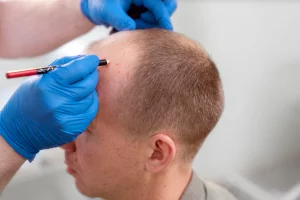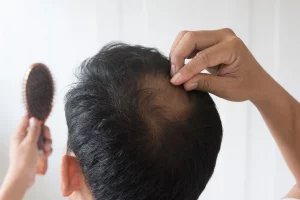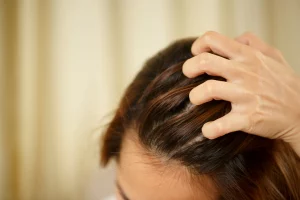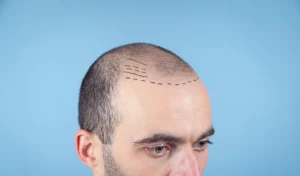Alopecia Treatment Options
Alopecia is a condition that causes hair loss, usually caused due to several factors, including genetics, medical conditions, and treatments. There are three main types of alopecia: alopecia areata, alopecia totalis, and alopecia Universalis. Another type, called androgenic alopecia, is responsible for most hair loss in women. Treatment options include topical treatments, oral medications, light therapy, and surgery.

Alopecia Cause
Alopecia cause happens due to many factors. Genetics, medical conditions, and treatments are the three main reasons. Others include medications.
- Genetics: Genetics is the most common cause of alopecia. If a person has a family member with alopecia, they are more likely to develop it.
- Medical Conditions: Medical conditions that can cause hair loss include thyroid disorders, lupus, and diabetes. Treatment for these conditions can often help improve hair loss.
- Treatments: Some treatments, such as chemotherapy and radiation therapy, can cause hair loss. This hair loss is usually temporary, and the hair will grow back once the treatment finishes.
Some medical conditions that may lead to alopecia include:
- Autoimmune disorders
- Skin conditions
- Hormonal imbalances
- Nutritional deficiencies
- Scalp infections
Certain medications and treatments can also cause hair loss as a side effect. These include:
- Chemotherapy
- Radiation therapy
- Certain anticonvulsant
- Blood thinners
- Beta-Blockers
Types of Alopecia
There are three main types of alopecia. Each type has its own set of specific characteristics.

Alopecia Areata: Alopecia areata is an autoimmune condition that causes bald patches and hair loss. It can affect anyone at any age, but is most common in people aged 15-29. There is no cure for alopecia areata, but treatment options can help improve hair growth and bald patches.
Alopecia Totalis: Alopecia totalis is a form of alopecia that causes complete hair loss on the scalp. It is an autoimmune condition that can impact anyone, but is most common in people aged 20-40. There is no cure for alopecia totalis, but treatment options can help improve hair growth.
Alopecia Universalis: Alopecia Universalis is a form of alopecia that causes hair loss on the scalp and body. It is an autoimmune condition that can modify anyone, but is most common in people aged 30-50. There is no cure for alopecia Universalis, but treatment options can help improve hair growth.
Another type is androgenic alopecia: Androgenic alopecia is a form of hair loss that can influence both men and women. A combination of genetics and hormones causes it, and this type of alopecia is one of the leading causes of hair loss in women. Androgenic alopecia receives treatment with medication, surgery, or lifestyle changes.
Symptoms of Alopecia
The main symptom of alopecia is hair loss. This hair loss can be bald patches, complete hair loss on the scalp, or complete hair loss on the scalp and body. Other symptoms may include:

- Itching
- Scaling
- Redness
- Soreness
Alopecia Treatment and Prevention
There are some alopecia treatment options. These include topical treatments, oral medications, light therapy, and surgery.
- Topical Treatments: Topical treatments are applied to the scalp and can be used to treat alopecia areata and alopecia totalis. These treatments can help improve hair growth and bald patches.
- Oral Medications: Oral medications taken by mouth can treat alopecia areata, alopecia totalis, and alopecia Universalis. These medications can help improve hair growth.
- Light Therapy: Light therapy is a type of treatment that uses light to improve hair growth. It can be used to treat alopecia areata, alopecia totalis, and alopecia universalis.
- Surgery: Surgery is an option for people with severe forms of alopecia, such as alopecia totalis and alopecia Universalis. Surgery can help improve hair growth.
Fortunately, there are several things a person can do to prevent alopecia. These include:

- Wearing sunscreen on the scalp
- Avoiding hot showers and heat styling
- Wearing hats and other head coverings
- Using gentle hair care products
- Avoiding harsh chemicals and treatments
- Eating a healthy diet
- Getting enough sleep
- Managing stress
If a person experiences hair loss, it is vital to see a doctor. Early diagnosis and treatment can help improve hair growth and prevent further hair loss. Alopecia is a manageable condition with the right treatment plan. With the help of a doctor, a person may find the best way to treat their hair loss and prevent it further.



